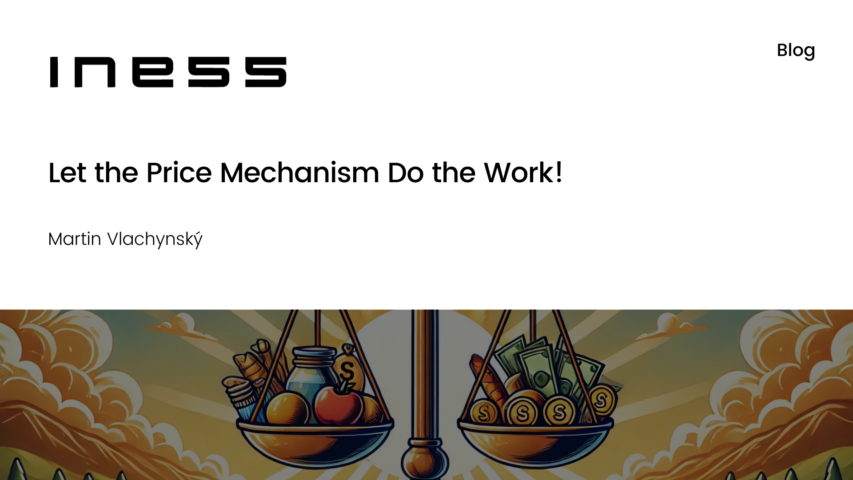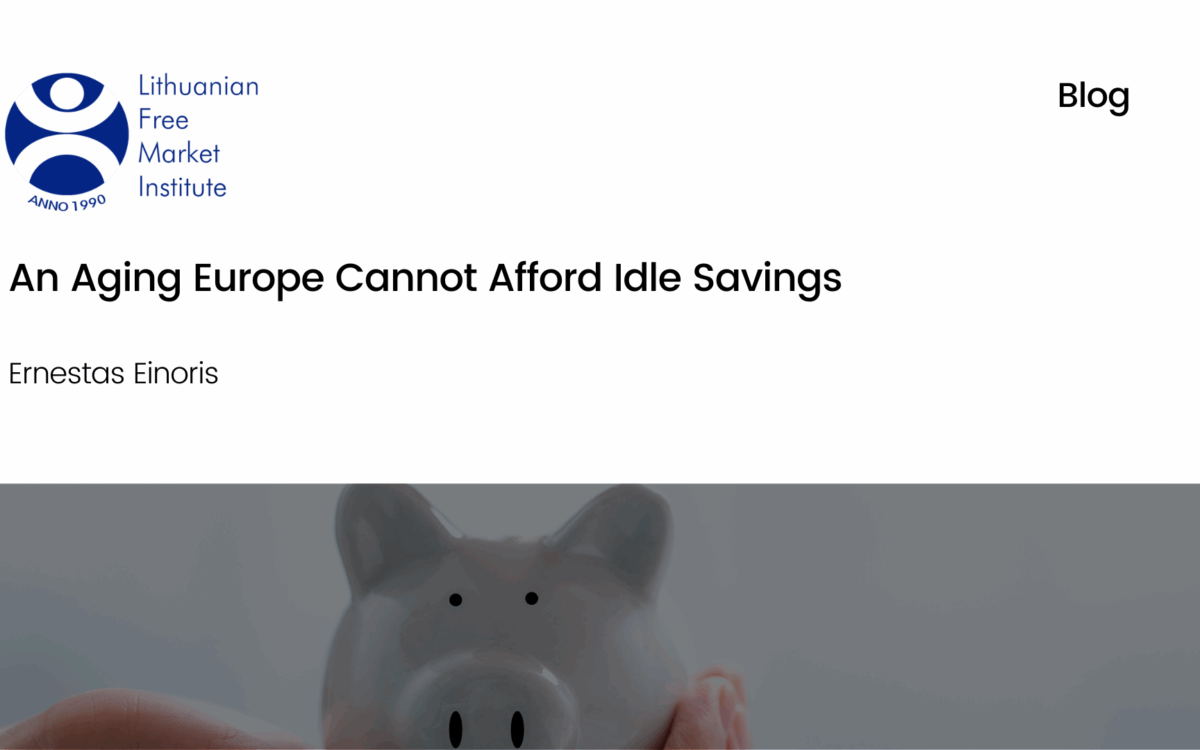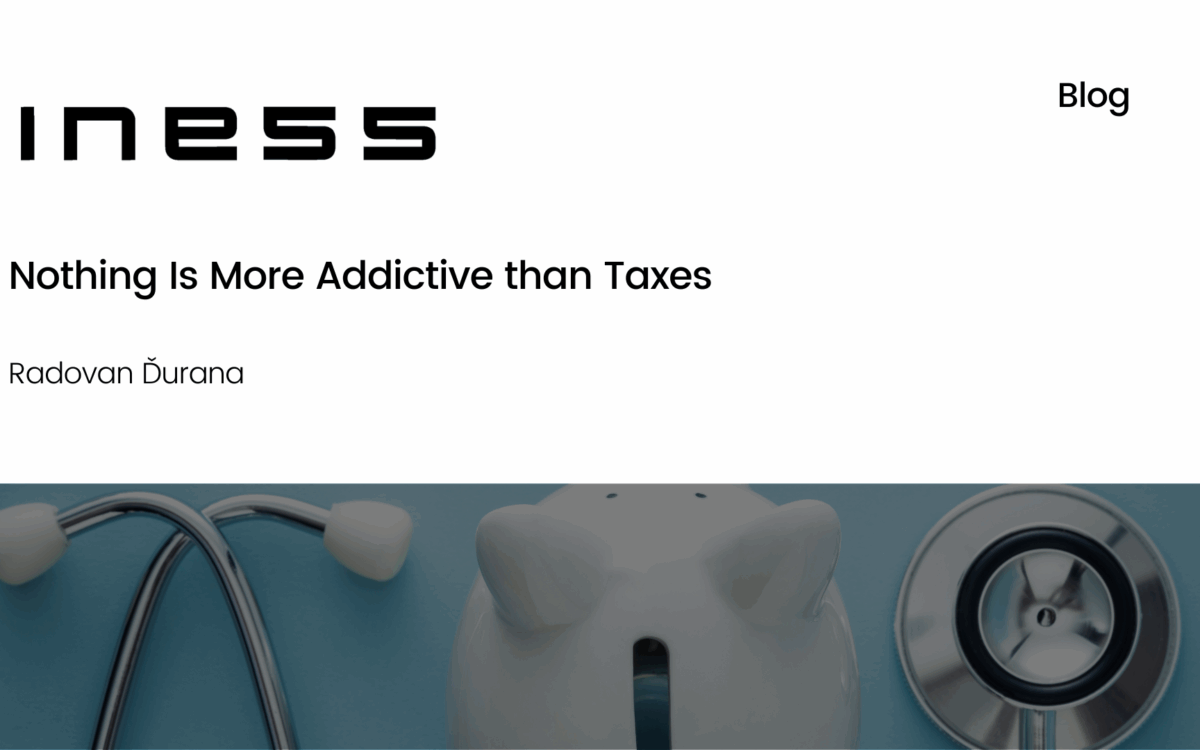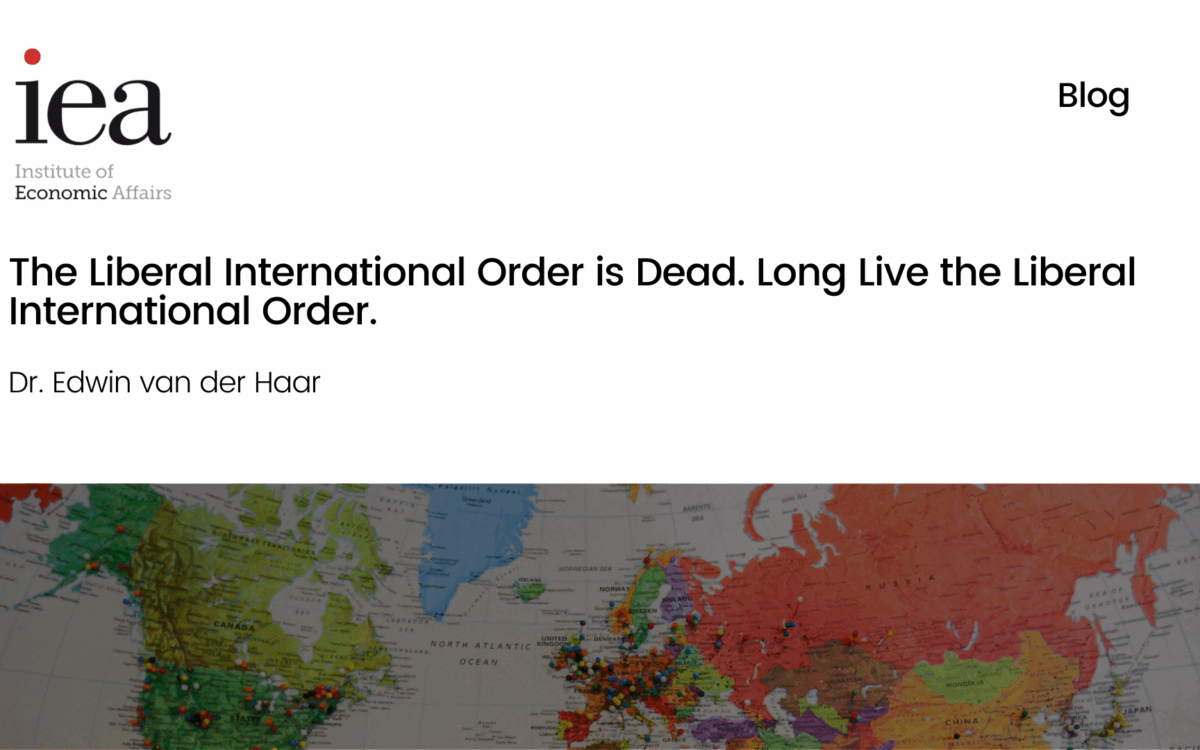Let the Price Mechanism Do the Work!

Let the Price Mechanism Do the Work!
Martin Vlachynsky // 20 December 2022
The French government has introduced a policy that makes it mandatory for parking lots with over 80 parking slots to have a roof with photovoltaics. This policy comes in addition to other EU Commission-made rules, such as making photovoltaics mandatory in all new buildings or banning the manufacturing of combustible engines after 2035. Such intervention sometimes seems overly prescriptive and goes against common sense – but not because anyone would disagree with the goal of lowering emissions. Still, one may ask: what is the impact of local European emission reductions in comparison to the industries of the US and Asia, which produce enormous emissions? For the sake of argument, let us put that aside. The reason why these measures could be considered ill-advised is simply that they allow policymakers to think that ‘their way’ is the only way of doing things.
The leaders of the EU and other similar regulatory powers, such as the US, UK, and many other developed economies, have embarked on an economic policy of micromanagement. They choose to regulate the output of lightbulbs and hoovers or having lengthy discussions on subsidising one thing and banning another. This approach only generates thousands of bureaucrats to implement and administer such regulation, but they can hardly conjure up growth and progress. In many cases, the market is self-regulating, so these policies are redundant. In practices these interventions can have the opposite effect or unforeseen consequences, which can lead to other problems.
Measuring economic costs and opportunities is the basis of economic thinking – in other words, economic thinking is thinking about the costs and benefits of certain policies and how policymakers’ choices can affect them. Therefore, policymakers should be careful; this is a tricky position to be in. It is in situations like these that many economists get carried away: an endless search for the best theoretical measure and regulation to bring the economy into equilibrium can affect the soundness of their thinking. Sometimes economists start to believe that only they have the answers to all economic questions. This is why the EU compiles and produces countless cost-benefit analyses and pie charts that, on paper, show the supposed ‘best outcome’ set forth by artificial means.
Yet all of these might be unnecessary because there is one phenomenon in economics which can bring growth and effectiveness without regulatory interventions; it is the one thing that can beat the pie charts of even the best economists or regulatory guidelines. This tool is called the price mechanism. Prices are phenomena of capitalism; they can – without any outside regulation or subsidy – bring capital and talent. The higher they are, the greater their attraction.
The key advantage of the price mechanism is that it does not need any subsidy, bans, or regulatory approval to work. When it comes to specific market events – such as the energy crisis – the first thing to do is to let the price mechanism work rather than come up with an overcomplicated regulatory initiative to make it work theoretically. If prices are reaching a catastrophic level for the most vulnerable parts of society, let us help them with targeted measures. But once governments decide to try and artificially set and alter prices via subsidies, taxes, and limits, they will only embark on a path to more chaos.
As we mentioned previously is the current set of European measures that intervene in the energy market. A complex network of national and transnational interventions – price caps, windfall taxes, and artificially set tariffs, coupled with national interventions and subsidy schemes – are pulling the market into the abyss.
If we let the price mechanism work, the outcome will be a fairer market, which will allocate private funds to new energy projects, insulated homes, and new Liquified Natural Gas Terminals. Most importantly, it will prevent the state from falling into more debt.
The original article was published by INESS in Slovakian and translated by Christopher Jakoubek.
EPICENTER publications and contributions from our member think tanks are designed to promote the discussion of economic issues and the role of markets in solving economic and social problems. As with all EPICENTER publications, the views expressed here are those of the author and not EPICENTER or its member think tanks (which have no corporate view).



